If you’ve ever dreamed of growing your own exotic, tropical-tasting fruits without the need for a greenhouse or tropical climate, pineapple guava (Feijoa sellowiana) is a fantastic choice. Also known simply as feijoa, this hardy, evergreen shrub or small tree not only produces sweet, aromatic fruits but also serves as a beautiful ornamental plant with its silver-green foliage and showy, edible flowers.
Native to the highlands of South America, pineapple guava has gained popularity in home gardens around the world for its versatility, resilience, and unique combination of aesthetic beauty and edible rewards. Whether you’re aiming for a statement landscape plant or a productive backyard fruiter, this guide will cover everything you need to know about successfully growing pineapple guava in your yard.
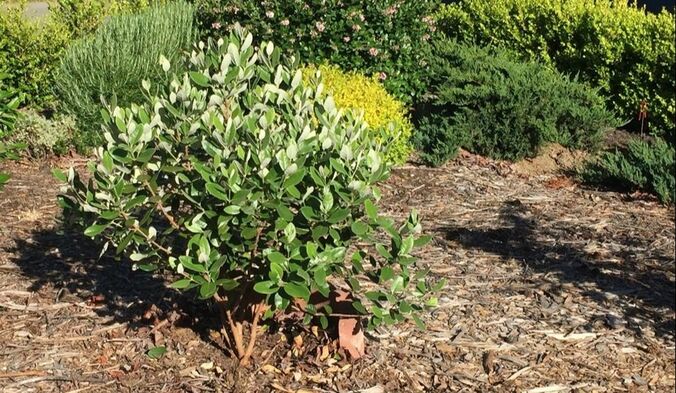
What is Pineapple Guava?
Despite its name, pineapple guava isn’t a true guava and has no direct relation to pineapples either. It belongs to the myrtle family and is prized for its small, egg-shaped fruits with a tangy, tropical flavor that tastes like a combination of pineapple, guava, and mint.
The plant features:
- Evergreen, silvery-green foliage
- Fragrant, exotic flowers with crimson stamens and white-pink petals (both edible)
- Small, green, egg-shaped fruits that ripen in fall
It’s an excellent addition to edible landscapes, hedgerows, privacy screens, or as a standalone ornamental tree.
Why Grow Pineapple Guava in Your Yard?
Pineapple guava offers several attractive benefits:
- Tolerates a range of soil conditions
- Requires minimal maintenance
- Drought-tolerant once established
- Attractive, edible flowers
- Self-pollinating (in some varieties)
- Cold-hardy down to 15°F (-9°C), making it suitable for USDA zones 8–10, and sometimes even 7b with protection.
Its versatility as both a fruit-bearing shrub and ornamental plant makes it a fantastic dual-purpose addition to any garden.
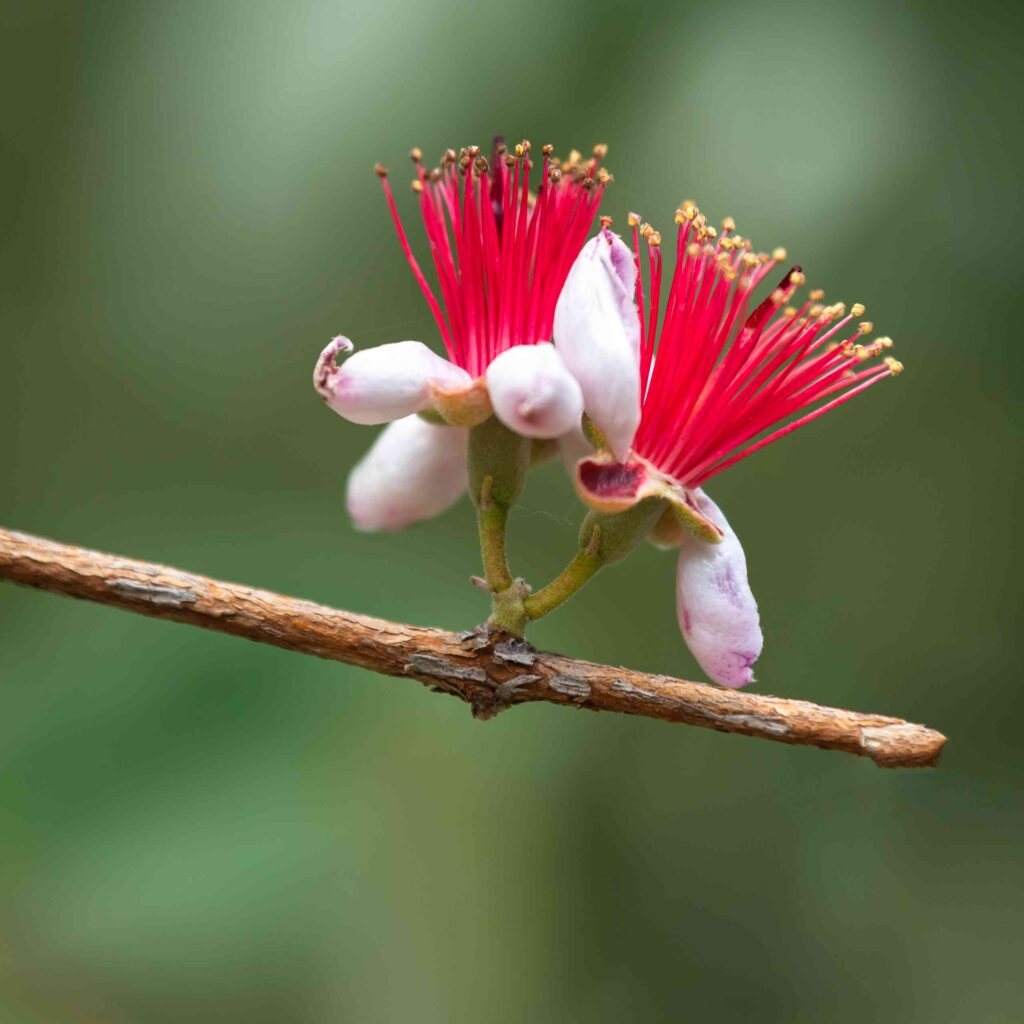
Choosing the Right Variety
Before planting, select a pineapple guava variety suited to your climate and intended use.
Popular Varieties:
- ‘Nazemetz’: Self-fruitful, compact, and productive. Excellent flavor.
- ‘Coolidge’: Another self-pollinating variety with reliable yields.
- ‘Apollo’: Requires cross-pollination but produces large, sweet fruit.
- ‘Mammoth’: Known for its exceptionally large fruits, needs a pollinator.
If possible, plant at least two different varieties for cross-pollination to improve fruit set and size.
Ideal Growing Conditions
Pineapple guava is a forgiving and adaptable plant, but providing optimal conditions will enhance growth and fruit production.
Sunlight
- Prefers full sun (at least 6–8 hours a day) for the best flowering and fruiting.
- Can tolerate partial shade but with reduced fruit production.
Soil
- Thrives in well-draining, slightly acidic to neutral soil (pH 5.5–7.0).
- Tolerates sandy, loamy, and even slightly clay soils if drainage is good.
- Avoid soggy, waterlogged conditions.
Temperature
- Hardy to about 15°F (-9°C).
- In colder areas, grow in sheltered spots, against south-facing walls, or in large containers for overwintering indoors.
Water
- Drought-tolerant when mature but benefits from regular watering during dry spells, especially in the fruiting season.
- Water deeply, allowing soil to dry slightly between waterings.

How to Plant Pineapple Guava
When to Plant
- Best planted in spring or fall, allowing roots to establish in mild weather before extreme heat or frost.
Planting Steps
- Choose a sunny location with well-draining soil.
- Dig a hole twice as wide and as deep as the root ball.
- Mix in some organic compost or aged manure to enrich poor soil.
- Place the plant in the hole, making sure the top of the root ball is level with the surrounding soil.
- Backfill and firm gently.
- Water thoroughly to settle the soil around the roots.
- Apply a layer of mulch to retain moisture and suppress weeds.
Spacing:
- Space multiple plants 8–12 feet apart for hedging or cross-pollination.
- Single specimens can be grown with at least 5–8 feet clearance from other large plants.
Caring for Pineapple Guava
Once established, pineapple guava is low-maintenance but benefits from a few simple care practices.
Watering
- Water regularly during the first year to establish strong roots.
- Once mature, water deeply every 1–2 weeks in dry weather.
- Avoid overwatering; it prefers slightly dry conditions between drinks.
Fertilizing
- Feed in early spring with a balanced slow-release fertilizer.
- Apply additional compost or well-rotted manure around the base annually.
Pruning
- Minimal pruning is needed.
- Remove dead or crossing branches in late winter or early spring.
- Light shaping can maintain size and encourage bushier growth.
Tip:
If using as a hedge, prune after flowering to preserve both blooms and potential fruit.
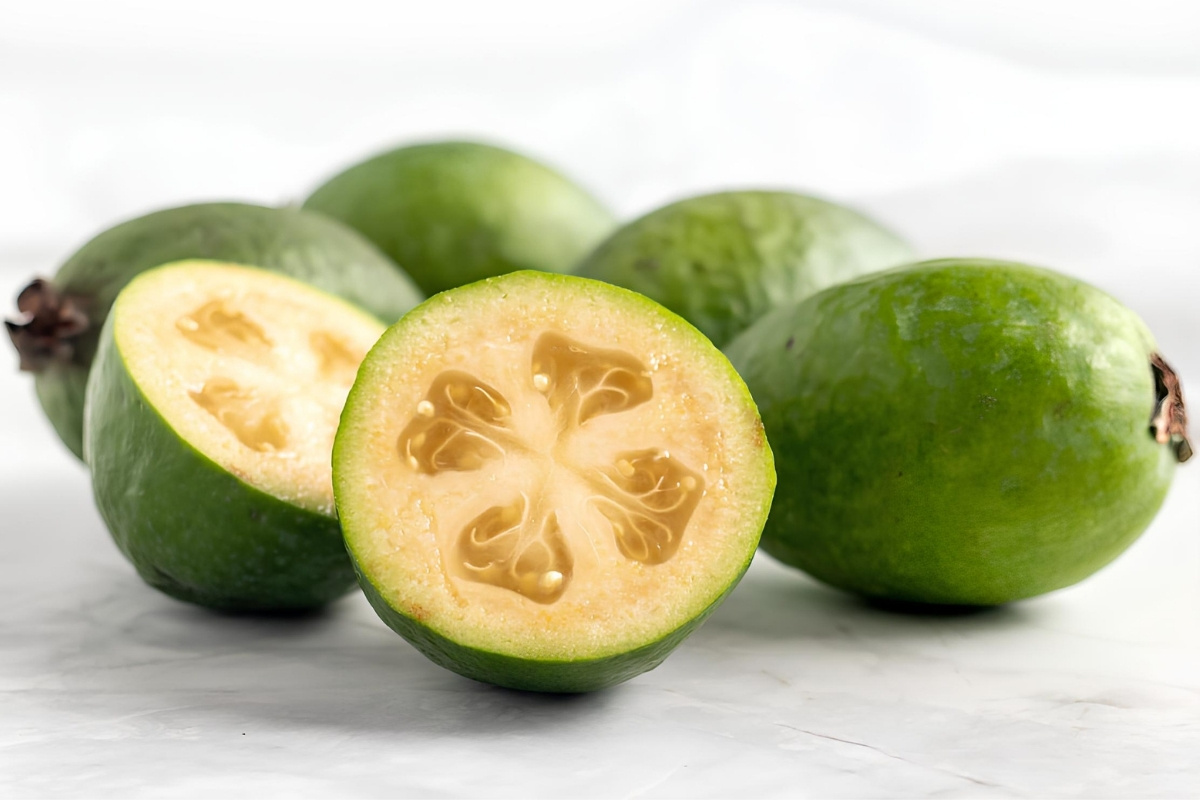
Pest and Disease Management
Pineapple guava is notably resistant to most pests and diseases. Occasional issues include:
- Fruit flies (in warmer regions): Use traps or cover fruit with fine mesh bags.
- Scale insects or aphids: Treat with neem oil or insecticidal soap if needed.
Good air circulation and well-drained soil help prevent fungal problems.
When and How to Harvest Pineapple Guava
When to Harvest
- Fruit typically ripens in late fall (October–November).
- Mature fruits often drop from the tree when ripe.
Signs of ripeness:
- Slightly soft to the touch
- Aromatic fragrance
- Easily detaches with a gentle twist
How to Harvest
- Collect fallen fruit daily.
- Or gently twist and pick when fruits feel slightly soft.
- Ripe pineapple guavas can be stored in the refrigerator for up to a week.
Pro Tip:
The edible flower petals can be gently plucked in early summer without affecting fruit set — they taste sweet and floral, perfect for salads and desserts.
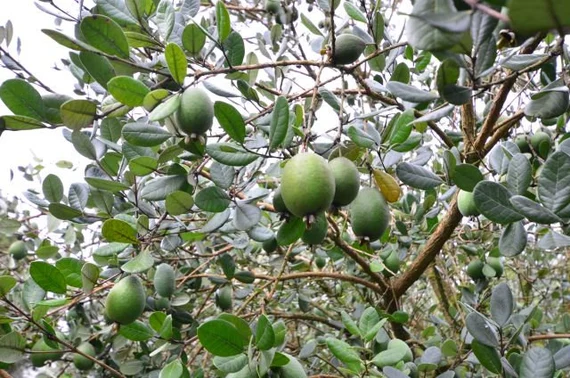
How to Use Pineapple Guava
Beyond snacking fresh, pineapple guava can be enjoyed in various culinary applications:
- Fresh: Scoop out the pulp and enjoy raw.
- Smoothies and fruit salads: Adds a tropical twist.
- Preserves and jams: Highlight its unique flavor.
- Baked goods: Use in muffins, cakes, and tarts.
- Chutneys and sauces: Pair well with meats and cheeses.
- Edible flowers: Garnish for salads, desserts, and cocktails.
Final Thoughts
Pineapple guava is a brilliant addition to any yard, offering year-round visual appeal, minimal maintenance, and delicious, tropical-tasting fruits. Whether you’re gardening in a Mediterranean-style landscape, a suburban backyard, or even large containers, this versatile plant delivers beauty, productivity, and resilience.
With the right care, you’ll enjoy showy edible flowers in spring, lush silvery foliage year-round, and a bounty of fragrant, sweet fruits every fall — turning your yard into a personal slice of the subtropics.

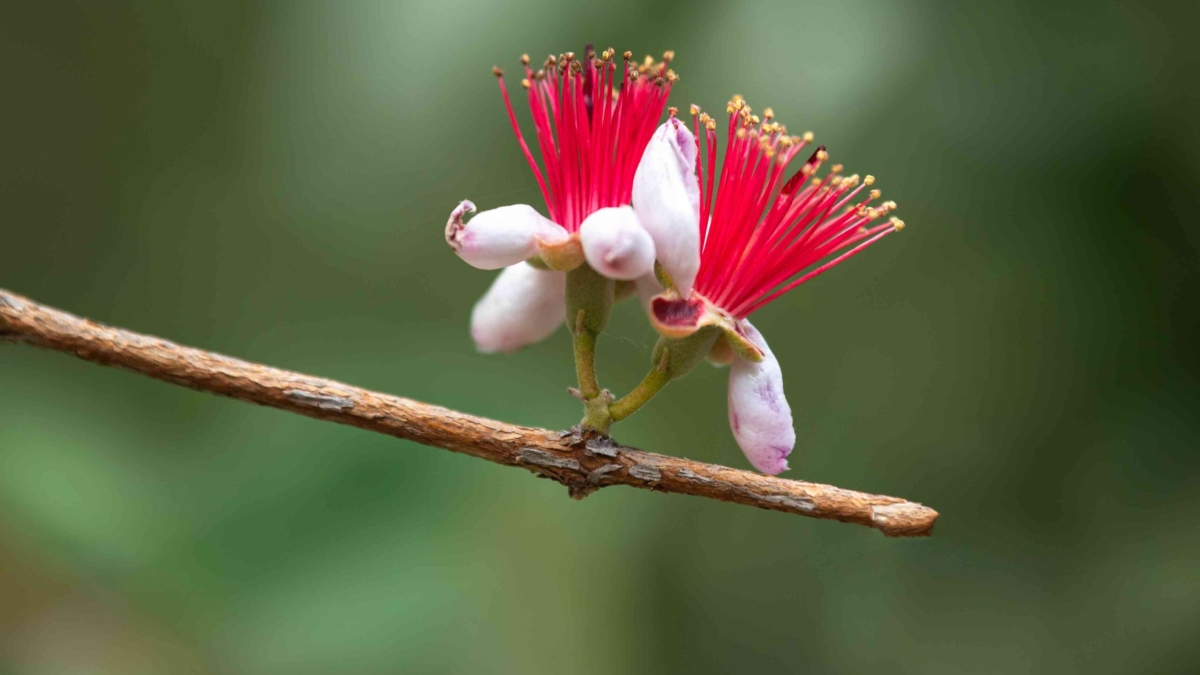




Leave A Comment